Background: Epilepsy in Children, The Schoolscompared.com Guide 2021.
“It came from nowhere. Our son is 12 years old. Never any issues. Then, over three consecutive nights at bed time, he had a seizure.
We have never been more terrified.
Three days later he was diagnosed with epilepsy by a consultant.
Two months later and all has been well. It is as if nothing at all had ever happened. But each night at bed time, the panic sets in about whether they will return. Our life just does not feel the same again with the all-consuming worry.”
SchoolsCompared.com Reader. February 2021.
Following our series of Guide on issues facing families and children, we were contacted by a parent who wanted us to cover the “forgotten subject” of epilepsy. She told us: “[y]ou just think it won’t happen to your child. And then it does. Parents in the UAE who face this need support – and those parents, like us, where it happens suddenly in adolescence out of absolute nowhere, deserve to be forewarned and to understand that they are not alone.”
If there is a single common theme in each of our Guides for parents, it is this shared, fundamental ethic that in small ways all of us can play our part in ensuring that no parent feels alone in facing life’s many challenges with bringing up children. We are also making a statement that never should feel alone….
In the following SchoolsCompared.com guide we provide an overview that we hope will provide some measure of support to parents – and create broader awareness that epilepsy is something that can start at any time. Clearly, this is only a guide and cannot be more than that. If you believe that your child has epilepsy, or if they suddenly have a seizure, your family doctor must be the first port of call for advice. .
What Is Epilepsy?
Epilepsy is a neurological disorder that affects a person’s nervous system. Also known as a seizure disorder, epilepsy is usually diagnosed after a person has experienced two or more seizures that were not caused by other identified underlying medical issues. Physically, a seizure is caused by a burst of uncontrolled electrical activity in the brain.
How Many Children Are Affected By Epilepsy?
Around 50 million people worldwide have epilepsy, making it one of the most common neurological conditions in the world.
The UK based Epilepsy Action, is a charity founded with the aim of improving the lives of all people affected by epilepsy. According to the most recent statistics, 1 in every 100 adults and 1 in every 200 children up to the age of 17 years will be diagnosed with the condition. Many more are not diagnosed because children do not have enough seizures to warrant a secure diagnosis.
To put this into perspective, that is an average of 3 children in every primary school and 10 in every secondary school based on the size of the average UAE school.
The Dubai Health Authority estimate that 1 in 10 people in the UAE will have a seizure during their lifetime.
If you are parent of a child who has epilepsy, you are certainly not alone.
A Misunderstood Condition
In some parts of the world, and in many cultures, there remains some stigma associated with epilepsy.
Historically, before there was any understanding of the condition, there was superstition surrounding the mysterious disorder, with some believing that a person who suffered from seizures was in some way either possessed or divine. There was, then, no better explanation. Stigma is a difficult thing to shake off. In fact, in more recent years, in many countries a diagnosis was enough to prohibit or annul marriages or withhold driving licenses and work permits.
It is also true to say, that experiencing someone having a seizure is at least uncomfortable and almost always frightening – and certainly when we have not experienced it before.
A recent study by Epilepsy Action showed that, although progress has been made and the stigma has lessened, many of us continue to fear the safety of being around someone with epilepsy and being able to cope with their having a seizure. Many of us too worry about those diagnosed with epilepsy driving or having responsibility for children.
Some parents reported feeling nervous to invite a child with epilepsy to their home or to a party because they would not know what to do if the child has a seizure in their care. Of course, this leads to the risk of children becoming social isolated and excluded from friendships. Children diagnosed with epilepsy are often consumed with worry that they will have a seizure in from of someone outside their family, that their friends will “find out” and/or that they will be bullied.
Stigma and prejudice (and a sincere worry from the general population about being able to offer the appropriate care) has meant that some families and individuals are reluctant to seek medical help for the condition, or choose to keep it a secret, on the basis that a diagnosis would limit the quality of their social and work life.
As always is the case with ignorance, misinformation and fear, education makes so much difference. The very last thing that anyone should do if they, or a loved one, has a seizure, or multiple seizures, is to hide it/them under the carpet.
Today, our schools play a vital role in creating awareness about epilepsy, its origins and treatments. It is vital that we all help dispel misunderstandings and removing stigma. In recent years, the World Health Organisation (WHO) has play a vital role in bringing epilepsy ‘out of the shadows’ and familiarising people with the causes, symptoms and modern medicines and innovative treatments that are available to look after those who are affected.
Removing the fear that surrounds epilepsy normalises something that is far more common that many of us knew, because it has been historically been so effectively, and wrongly, swept under the carpet. No parent, or child, should feel alone with epilepsy.
What Causes Epilepsy?
According to the Epilepsy Foundation the causes of Epilepsy vary depending on the age of the person affected. But what is also true is that the actual cause of epilepsy is never known for around half of all the people diagnosed. Many others are never diagnosed at all.
Known causes include:
- Genetic predisposition – although this is often disputes as in many cases there is absolutely no known genetic history of epilepsy in a family.
- A change in the structure of the brain is the reason for epileptic seizures in 3 out of 10 diagnosed people. In some cases adolescence can be a trigger, or even a bad virus.
- Changes in the brain caused by complications face by a Mum during birth.
- Neuroglial infections and remaining scarring.
- Severe head injuries.
- A stroke.
Often none of these seem to apply at all.
How do parents even know?
The younger the child the more difficult it is to recognise epilepsy. Babies and very young children cannot tell us how they feel or what they remember. In infants and young children a very high fever can evoke seizures. In the worst (and rare) cases, epilepsy can result from a brain tumour, an infection or other pre-existing issues.
In babies, epilepsy can be attributed to malformations in the brain, a lack of oxygen during birth, blood sugar problems, other electrolyte issues or even maternal drug use. A seizure in a baby may not necessarily be attributed to epilepsy – but the fear of the unknown can be very stressful for parents and there is evidence to suggest that seizures may recur as epilepsy later in life.
In older children and young adults, congenital conditions such as Downs Syndrome, Angelmans Syndrome or other genetic factors can be the source. More rarely it can be triggered by progressive brain disease and, most commonly, a head trauma. Again, however, the majority of those diagnosed with epilepsy have no obvious cause for its starting.
Recurring Seizures Are The Main Indicator of Epilepsy
There are around 60 different types of seizures and any given person may experience more than one type. Unfortunately this makes identification of a seizure itself difficult. Attributing a seizure to epilepsy is also complicated.
Seizure types can also vary depending on where in the brain they are happening and this in turn results in varying symptoms and indications.
For example, many children (and adults) remain totally (blissfully!) unaware of what is happening to them throughout a seizure. Many wonder what all the fuss is about afterwards. During a seizure they lose consciousness entirely and have no recollection at all of what happened to them.
Conversely, some children have consciousness of what is taking place during a seizure. Others experience any variation of recalling something between these two experiences.
Once the seizure has passed, the child’s brain does usually return to normal. In many cases the child does not even know anything has happened – and often seizures do not ever recur.
However, over time, if seizures do continue, and they are left untreated, they may become dangerous. Continuing seizures can impact on a child’s growth, development and education. The seizures themselves can also cause injury (falling out of bed and hitting the floor, for example). For this reason, even after a single seizure, parents should never feel concerned in speaking with their family doctor.
Understanding what to look for….
“I was often accused in school of being stupid and daydreaming in lessons.
Years later I learned that I looked out of the window when I was having vacancy seizures.
If someone, anyone, had only recognised this this my childhood would have been very different – and far less sad.
Thank the stars that the world my children are growing up in today is so much more knowledgeable about epilepsy.”
Seizures caused by epilepsy are produced by uncontrolled disturbances in the electrical activity of a person’s brain cells. This stimulates temporary abnormalities in the muscles. In practical terms, this means someone having a seizure can suddenly appear stiff, or twitch uncontrollably, or appear lifeless. There may also be other unusual behaviours present and a child can have strange sensations and varying states of awareness. Seizures can also be caused by high fevers or certain other illness.
As a parent, things to watch for are:
- Short blackouts
- What appears to be a very deep daydream
- Dazed and confused behaviour
- Gaps in the memory
- Mumbling
- Lack of responsiveness
- Muscle contractions
- Sudden falls, frequent stumbling or unusual clumsiness
- Repeated, unusual movements such as their head nodding or rapid blinking
- Sudden stomach pain followed by confusion and sleepiness
- Unusual sleepiness and irritability when woken up
- Frequent complaints that things look, sound, taste, smell or feel “funny”
- Sudden, repeated fear or anger
- Skin and lips turn a shade of blue
- Clusters of (repeated) “jack-knife” movements in babies who are sitting down
- Clusters of grabbing movements with both arms in babies that are lying on their backs
Many parents say that the pieces suddenly all fall into place after a diagnosis. Some children, for example, can find schools saying on report cards that their child lacks concentration in class and “spends too much time looking out of the window.” This, with the benefit of hindsight, is often, after the fact, recognised as a classic sign that children, far from being inattentive, are, in fact, experiencing mild seizures. UAE schools are generally very good at knowing what to look for….
What Can You Do If You Think That Your Child Has Epilepsy?
Get An Official Diagnosis
The first step should always be to contact your Doctor. It is important to remember that many of the indicators detailed above are fairly common developmental habits or behaviours in children who don’t have epilepsy at all. If you have any doubt at all, it is always better to be safe. No doctor will ever judge a concerned caring parent.
In most cases, doctors will refer cases to consultants. These consultants generally ask how many seizures have occurred, over what period and then carry out simple (non invasive, painless) tests. A firm diagnosis may not be issued for up to two years – far more likely is a tentative diagnosis. Tests include an EEG (electroencephalogram), neuroimaging, MRI, (magnetic resonance imaging) or CT (computed tomography) and sometimes blood tests (to indicate whether there are other reasons for seizures).
What happens to every child during a seizure is one of the most important pieces of information required by consultants. If possible, videoing a seizure can be helpful – but doing so is usually the very last thing on the minds of parents.
There are online tools too that can be used to guide consultants. For example, the ‘My Seizure Diary’, from the UK based Epilepsy Foundation. is a management resource for parents that helps record triggers and understanding of what may cause a seizure. Understanding triggers is so important. If you can be sure that, for example, stress and tiredness, or playing games on a Nintendo at bedtime, cause seizures, it becomes so much easier to make modifications to each child’s life to avoid these as far as possible.
Taking information about triggers to a consultant goes a long way in ensuring that a diagnosis is accurate – this vital in ensuring that the resulting treatment is both appropriate and effective.
Talking About Epilepsy With Your Child
It is likely that your child will have many questions about their diagnosis and will need plenty of reassurance and open communication from the most trusted and important person/people in their life.
Here are a few tips from charitable organisations about how to approach what can be a difficult, and sometimes traumatic, conversation.
- Stay positive and use clear and easy to understand language;
- Encourage them to ask questions and ensure them that you will be available to answer their questions whenever they need you; and,
- If your child is young, reinforce your explanations about what the seizures are with stories or pictures (a list of popular books is listed below)
For teens:
- Suggest that they join online support groups so that they can share their experiences with their peers;
- Discuss triggers and how to address and avoid them;
- Depending on their maturity, let them to manage medications prescribed by consultants to allow them some sense of control over their situation.
The absolute priority in every case, is not to let your child experience your worry (and more often absolute terror). You will be frightened – all parents are faced with their child having a seizure. It is inevitable that we will all be frightened facing a diagnosis of epilepsy for our child. It is so hard, but not conveying that is so important. Children must not feel “damaged” or anyway less than they were in the eyes of those they depend on and love.
Treatment
According to research conducted by Cerebra, a UK based charity that was formed to help children with brain conditions and their families; the prognosis for most children with epilepsy is very good.
- Anti-Epileptic Drug (AED) medication can control seizures in 75% of children
- 64% of people who have childhood seizures will be in remission as adults – epilepsy simply disappears.
- Only 16% of children diagnosed with epilepsy go on to require medication as adults.
Every individual case is different and needs unique management and follow-up care.
Diet Therapy
An approach to managing seizures that is gaining more and more traction over time is diet therapy. Recommended by physicians and nutritionists, there are 4 major diet types that are all low in carbohydrates and high in fats. A controlled diet is most often adopted when medication has failed to be effective.
- Ketogenic diet
- Medium-chain triglyceride diet (MCT)
- Modified Atkins Diet (MAD)
- Low Glycemic Index Treatment (LGIT)
There is solid evidence that all 4 major epilepsy diets have positive results. Some work better in young children than others and some are more beneficial to teenagers or adults. To try any of these diets, it is important that your child is first seen by an epilepsy specialist and a nutritionist to get a personalized food plan that is devised especially for their unique needs.
Surgery
The aim of surgery is to remove the underlying cause of the epilepsy or to reduce the frequency of the seizures. Surgery is usually recommended if medication and diet are not effective and the epilepsy is causing severe behavioural or educations issues. There are different types of surgeries for different types of epilepsy and the results are often excellent in commonly performed operations, around 70% of children will become seizure free as a result. Surgery is rare.
Management Tools
EMP
An Epilepsy Management Plan is a document that is created in collaboration with schools, medical professionals, parents and the child themselves. Having the plan is the best way to understand and respond to episodes and includes seizure types, triggers, support techniques and emergency procedures to follow (among other items.) There are also many tools, gadgets and gizmos on the market that can help monitor and record events 24-hours a day so that a parent or caregiver can be alerted should their child have a seizure.
Often, gizmos are important because they give loved ones comfort and a small measure of perceived control.
Bed movement sensors are positioned under a child’s mattress and plugged into an alarm monitor to constantly analyse the body movement, body temperature, release of liquid and other seizure indicators. The monitor is able to differentiate between normal sleeping movement and seizure activity. They arose in part because parents can find themselves sleeping on their child’s bedroom floor, worried in case they will not be there, or know, when a seizure takes place. The terror of a child being in their bedroom alone having a seizure is one of the major fears common to all parents. At the same time, it is not sustainable for adolescent children to have their parents sleeping in their bedrooms.
There are also watches available that automatically alert caregivers with the status and GPS location of the wearer and can even be set to coordinate with emergency medical assistance.
This link is to the Epilepsy Foundation page that has in-depth details of alarms and monitors that are designed to detect seizures.
As parents and children adjust to epilepsy, often the perceived need for these devices diminishes. The best and more accurate devices are usually extremely expensive.
What Should You Do When A Child Has A Seizure?
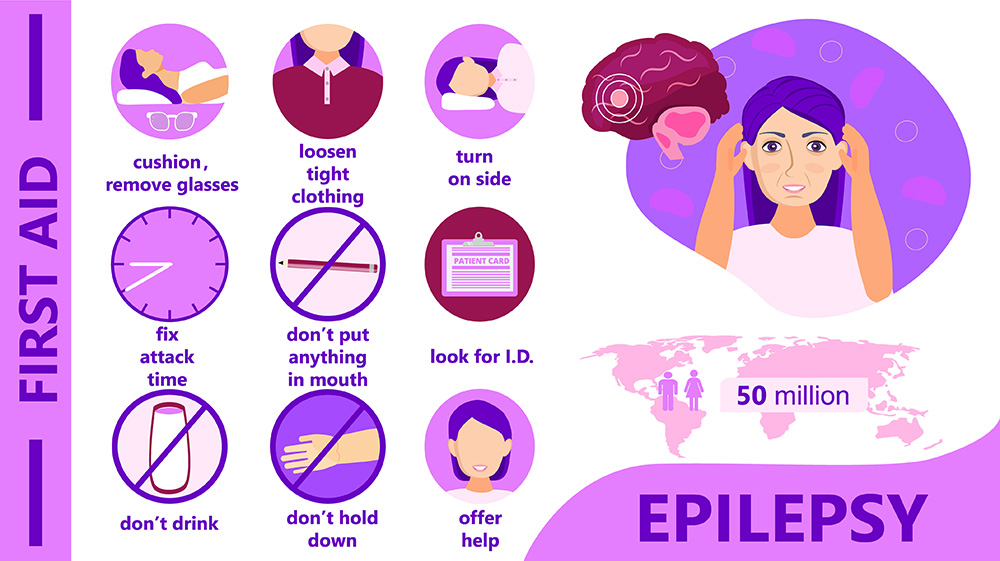
Epilepsy infographic. Awareness Month is organized on November. First aid of epilepsy attack. Cartoon concept vector on purple background for banner, flyer, web.
An epileptic episode, or a seizure, can be extremely frightening both for the person experiencing it (for those who are aware when they take place) and for those watching. For a parent seeing their child have a seizure, especially for the first time, the experience can be utterly horrifying.
Understanding what is happening, and what you can do to help your child, or someone else’s child, can go along way to allaying that fear. Knowing how to respond to a seizure and help a child to manage what must be a very scary few moments for them either during the seizure or afterwards can make a substantial difference to the lives of children. It is important to not make children feel fear or shame because they have had a seizure – something easier said than done when faced with seizure for the first time.
There are numerous institutes or learning centres in the UAE that offer comprehensive first aid courses that include epilepsy and seizure first response. These include:
- Safehandsuae.com
- Dubaifirstaid.com
- Imeacademy.com
Below is a short overview of what first responders will learn on a course.
Stay: Staying calm is the very first thing that any first responder should do. It not only helps you to think clearly but also helps the people around you to remain calm – and offers the person having a seizure some comfort that you will be there to help them. Stay with the person having the seizure, check for a medical bracelet, reassure them and start timing the event. Most seizures last only a few minutes, so knowing how long it lasts can determine whether to call for further emergency help.
Safe: Move or guide the person away from external danger or sharp objects. Encourage watchers to step back to give them room and privacy. Waking up to a crowd of observers can be embarrassing, upsetting and confusing.
Side: If the person is unconscious, turn them onto their side in as comfortable position as possible. Loosen tight clothing around the neck.
If they are awake and standing, try to guide them to sit or lay down somewhere safe.
DO NOT: Put anything in their mouths or restrain them.
Call for emergency assistance if:
- A seizure lasts for more than 5 minutes;
- Seizures are repeated in quick succession;
- Breathing is laboured and difficult;
- The seizure happens in water;
- If the person is pregnant;
- If the person received an injury during the seizure;
- The person does not return to their usual state post seizure;
- The person is having a seizure for the first time; and/or,
- If the person asks for medical help
The Broader Affects Of Epilepsy In Children
Studies have identified that the impact of epilepsy in a child goes further than the medical issues. It has been well documented that children with epilepsy, often experience problems in multiple areas, such as academic achievement, behavioural and emotional adjustments and social interaction. It is very important to note, however, that epilepsy itself has no correlation at all with a child’s intelligence.
Teachers, school leaders and supporting medical staff in all UAE schools can be expected to be knowledgeable about epilepsy, hugely compassionate and have extensive policies in place to look after children during seizures or diagnosed with epilepsy.
What Should You Expect From Your school?
It is totally natural for a parent of a child with epilepsy to worry about them having a seizure at school. With communication, teamwork and the right kind of support, epilepsy should not, however, hinder your child’s school experience.
If you are at the stage of trying to identify whether your child has epilepsy, it is important that you speak to your school. Schools will respond by observing your child throughout the school day so that together you can build a record of events to present to medical experts and be prepared should a seizure occur. Many children do not want schools to be told fearing that should knowledge become widespread about their condition they will be ostracised and/or bullied. Schools will protect your child from this.
Safety: All schools in the UAE are required to have first aid trained staff for the safety of everybody on campus. The faculty (especially your child’s direct teacher and Teaching Assistants) should also be taught how to recognise seizures and how to manage them. Your child’s Individual Healthcare Plan, detailing triggers, seizures and first aid requirements should always be on hand as a referral guide.
There are many free online tools available for schools to help them be prepared for seizure management in school, including checklists for field trips, epilepsy awareness courses for teachers and pupils, medicine administration guidelines, behavioural management support and Individual Healthcare Plan (IHP) guides. One of many examples can be found here.
Inclusion: It could be that the worry about triggering seizures means that the school may wish to exclude a child with epilepsy from events like Sports Day, Performing Arts events or field trips. This is, however, unusual. Schools recognise how important it is for any child to feel a sense of belonging and inclusion – and to feel that they are no different from their friends. Collaborating with your child’s schools to put often basic safety measures in place will mean that they are able to enjoy exactly the same daily life as their peers. Children with epilepsy should also not be exempt from the normal codes of conduct that apply to their classmates.
Academic Achievement: Many children with epilepsy achieve both academically and socially and, depending on the severity of their epilepsy, most enjoy a normal and active childhood with only a few safety precautions in place.
This said, it is known that children with epilepsy may experience issues with visual and or verbal learning processes, problem solving, memory recall, complications with their hand writing (due to motor control problems), and some delays with reading, writing and rote learning.
In terms of behaviour, too, a child with epilepsy may face low self-esteem, frustration that manifests as angry outbursts, anxiety and poor motivation. They may experience all, some, or none of these difficulties with varying severity.
Just like any other student in your child’s school, they should be monitored for any of these and, if it is needed, an IEP (Individual Education Plan) should be put in place.
Teenage students have reported that one of the triggers of an epileptic seizure is stress. This can make exam time even more of a challenge and your child’s school should bear this in mind and make any necessary adjustments to help relieve the pressure (what those adjustment are will be unique to each student). The key point here is that schools – and exam boards – are supportive. They will do all they can to help your child.
Any Outstanding, or Very Good school in the UAE will also always have a school councillor. If behavioural issues are present, they will work closely with each child’s medical team to create a bespoke plan to help children achieve to their full potential.
For more information on caring for your child’s mental health, click here.
Child Epilepsy and Bullying
Having a condition that makes you stand out from the crowd can be difficult for a child and fodder for a bully.
Research consistently shows that, wherever children are in the world, that children with epilepsy report being teased or mocked for their seizures and /or for the side effects of their medication. These side effects, for example, can include acne, fatigue and loss of bladder control during a seizure. It is easy for all of us with a heart to understand every single children’s fear of being humiliated and/or bullied.
One way to help reduce the risk of bullying is to educate students. A teacher plays an absolutely vital important role in how a class accepts a child who has seizures, having open discussions and encouraging questions will dispel misunderstandings and create an atmosphere of inclusion and empathy. Teachers do care.
On the flip side, it has also been documented that the behavioural problems that can accompany epilepsy have meant that a child may lash out at their peers, particularly when feeling cornered or vulnerable,.
The Ministry of Education, in 2018, launched an anti bullying campaign to raise awareness of bullying across the UAE. The campaign focused on what bullying is, the impact it has on students and how schools should respond to stop it. All schools in the UAE must have anti-bullying policies in place to counter the possibility of bullying occurring – and they must also have set procedures in place to manage the situation when it does.
Bullying is never acceptable in any way shape or form. For our SchoolsCompared Guide to Bullying in schools follow this link.
Guidance and support in the UAE
There appears to be a significant lack of support in the UAE (and in fact globally) for what is in fact a fairly common neurological disorder. There is a global event named Purple Day which was formed with the intention of raising awareness, dispelling myths and allaying fear of epilepsy. Purple Day is March 26th and it would be really positive to see schools across the UAE making more of the important event.
Bottom Line? The SchoolsCompared.com Guide to Epilepsy in Children.
It is worrying and depressing that one of the world’s most common neurological conditions face by children should receive so little attention.
Age-old stigma, and perceived judgments by broader society, mean that it is an illness that hides in the shadows.
The best schools understand just how important they are in protecting children from the impacts of epilepsy. Often the most horrific and irreversible impact of epilepsy is not, in fact, medical – many children simply grow out of it. Instead, the damage caused by epilepsy can be the persistent shame, humiliation, fear and mental damage that is caused by bullying and the fear of “being discovered”, labelled and made an outcast.
In this area, as so many others, it is the kindness of teachers and school leaders – something that so often comes with those who turn to teaching as a vocation, that can make or beak a child’s experience of the world – and forever.
Further study into the causes of epilepsy is, too, so needed, but there is progress – and there is always hope.
Medicines that control seizures are becoming more and more effective, the importance of nutrition is becoming clearer and pinpoint laser surgeries have proven to be hugely successful without causing damage to unaffected brain cells.
Inclusivity in schools and the welfare of every child has never had a higher profile. The brutality of school so many of us grew up with is something, thankfully, that is foreign to the experience of most children in UAE schools.
Anti bullying campaigns are having a positive impact on the lives of every child. Individual education plans ensure that children are supported as the norm, not the exception. Caring for children rather than treating them as needing toughening is the new normal. For those who say the world is getting too “woke” – just stop and think what you and your child would need facing this.
Finally, if your child is diagnosed with epilepsy, you will feel the gamut of emotions – most of which will be rooted in the worst of them – fear. But, you are not alone. Most children will grow out of epilepsy. Many will have seizures in clusters – and may well never have another, or have only one or two. The worry will not go away after diagnosis – but the best schools will hold your hand, and that of your child, once you advise them of a diagnosis. ,
Recommended Reading
Arguably, there are not enough books about epilepsy, fiction or otherwise. Here are some books that we think can help:
- Farah And Ted Visit The Hospital: The story of a young girl experiencing the diagnosis process, aimed at preschool children.
- Brain Learns About Epilepsy: A story of a young boy whose mother has epilepsy, which explains what the condition is, aimed at elementary school kids.
- Happiness Heroes: Deals with the subject of bullying, aimed at elementary age kids.
- Takedown by EMJ Benjamin Banks a novel about a High Schools wrestler who has epilepsy.
- Looking at the Stars, by Lewis Hine. The true story of a leading figurehead who details his daily life and rising fame living with epilepsy.
- A Smell of Burning by Colin Grant. Grant is a broadcaster who dedicated this book to his brother who had epilepsy, it is an emotional read, touchingly detailing the impact the condition has on the whole family.
Support in the UAE
- A Facebook support Group can be found here.
- If you are a parent or group that operates in the UAE helping and supporting parents with children diagnosed with epilepsy, please can you contact us so that we can add your details to this article. Please email the editor on [email protected] or add a comment to this page.
- If you are a parent that would like to add your thoughts to this article, please do add your comments to this article which will be passed to the Editor.
- If you are a school that runs Purple Day, or plan to do so having read this article, please contact us through the usual channels so we can celebrate you in this article.
- Dr Muhammad Majid Al Kaylani, Consultant Neurologist and Epileptologist at Rashid Hospital, the largest neurology Centre in the UAE, is a good starting point for advice. E-Mail: [email protected]. Telephone (24/7): 800342(DHA) / +971-42198888 (switchboard).
© SchoolsCompared.com. All rights reserved. 2021.


























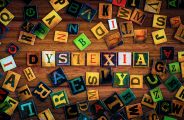











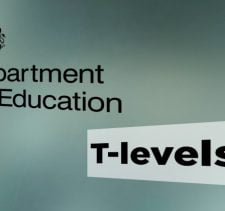




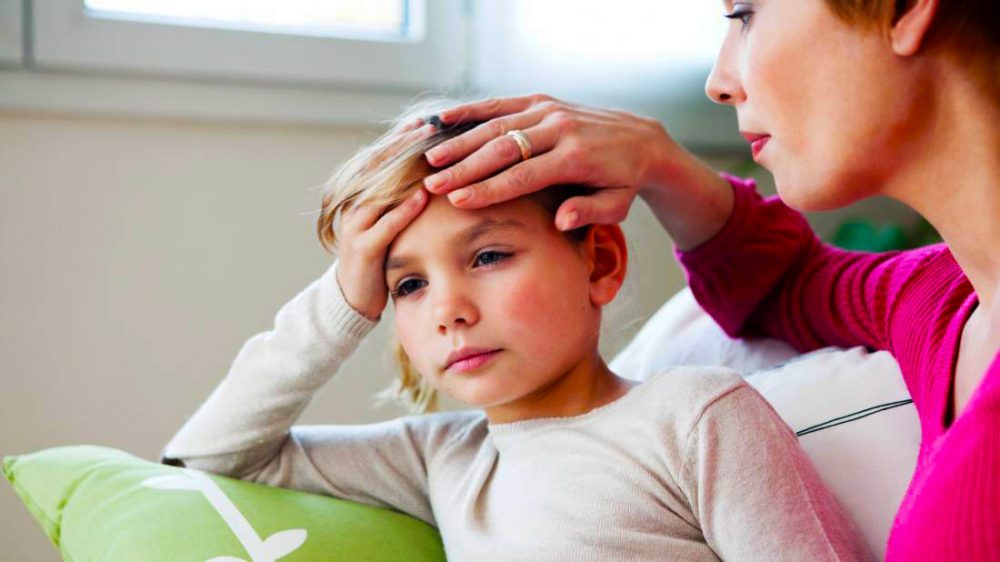













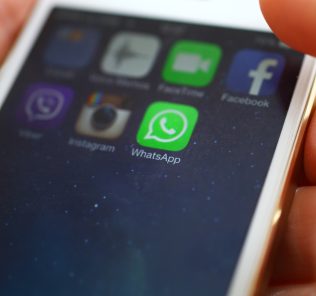


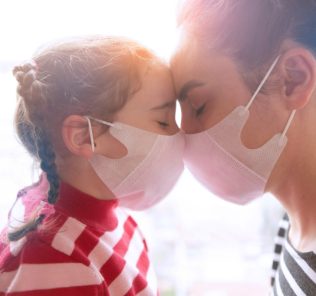




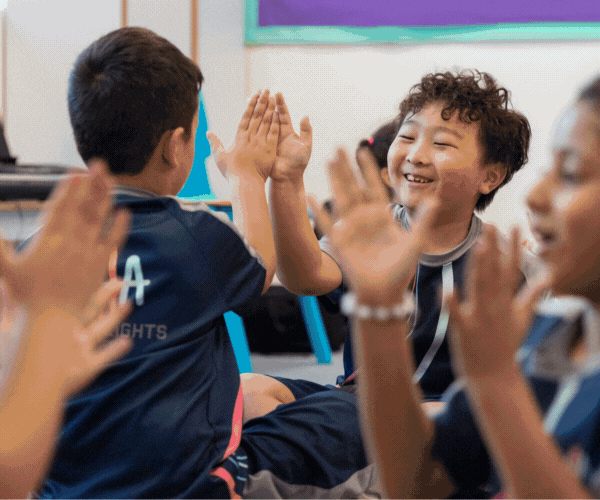











Leave a Response